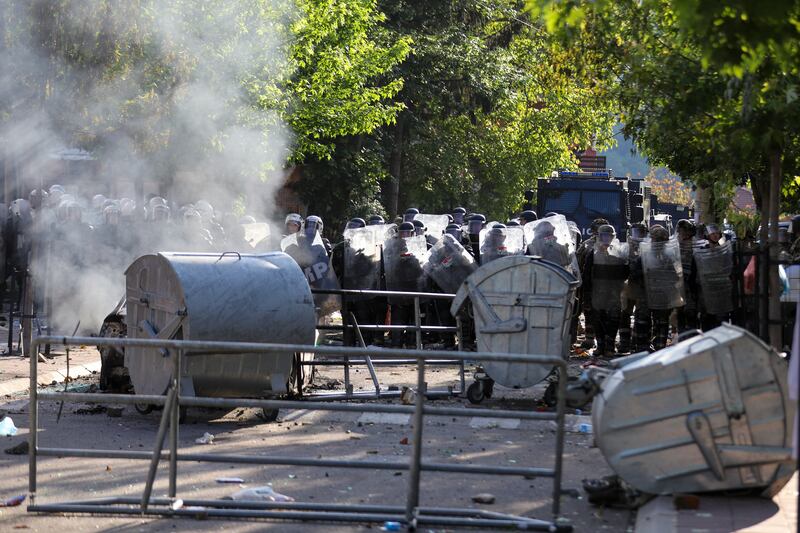Nato has sent 700 more troops to Kosovo to help quell violent protests and has put another battalion on standby in case the riots spread, its secretary general Jens Stoltenberg has said.
“We have decided to deploy 700 more troops from the operational reserve force for western Balkans and to put an additional battalion of reserve forces on high readiness so they can also be deployed if needed. These are prudent steps,” Mr Stoltenberg told reporters in Oslo, after talks with Norwegian prime minister Jonas Gahr Store. A battalion typically ranges from 300 to around 1,000 troops.
[ Explainer: Why Kosovo’s stand-off with Serbs goes on 15 years after statehoodOpens in new window ]
Mr Stoltenberg condemned the violence in Kosovo, saying that “such attacks are unacceptable and must stop”. He warned that Nato troops “will take all necessary actions to maintain a safe and secure environment for all citizens in Kosovo”.
He urged both sides to take steps to de-escalate, refrain from “further irresponsible behaviour” and to return to EU-backed talks on improving relations.
Eric Adams, the New York mayor at the heart of Donald Trump’s attempt to reshape US justice department
Thanks to Trump, Saudi Arabia gets a big week in international diplomacy
Trump has flown US into turbulence and Americans aren’t sure where they’re going to land
Polls indicate German federal election will return Merkel-style coalition
A statement on Tuesday by the multinational peacekeeping force known as KFOR said 30 soldiers – 11 Italians and 19 Hungarians – “sustained multiple injuries, including fractures and burns from improvised explosive incendiary devices”.
Three Hungarian soldiers were “wounded by the use of firearms”, but their injuries were not life-threatening, the statement added.
Serb officials said 52 people were injured, including three seriously. Four protesters were detained, according to the Kosovo police.
Tensions first increased over the past weekend, after ethnic Albanian officials, elected in votes overwhelmingly boycotted by Serbs, entered municipal buildings.

In a video message issued on Tuesday evening, Kosovo prime minister Albin Kurti said the mayors elected in the April 23rd voting “are the only ones who have the legitimacy to be at the municipal buildings and to the citizens’ service”.
When the Serbs tried to block them, Kosovo police fired tear gas to disperse the crowd.
In response, Serbia put the country’s military on the highest state of alert and sent more troops to the border with Kosovo. The Serbs protested again on Monday, insisting both ethnic Albanian mayors and Kosovo police must leave northern Kosovo.
The confrontations worsened when Serbs attempted to enter the municipal offices in Zvecan, 45km north of the capital Pristina.
They clashed first with Kosovo police and then with the international peacekeepers who deployed in Zvecan.
The flare-up has triggered a flurry of international efforts to calm the situation. – AP













